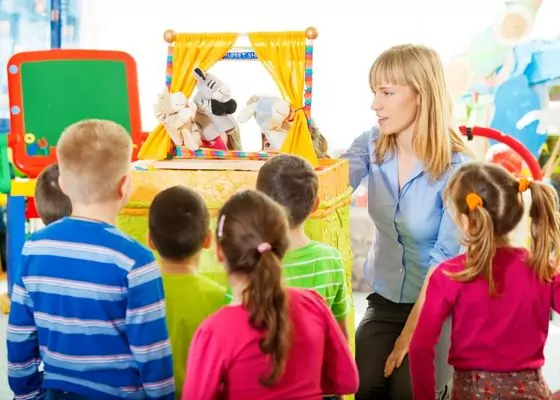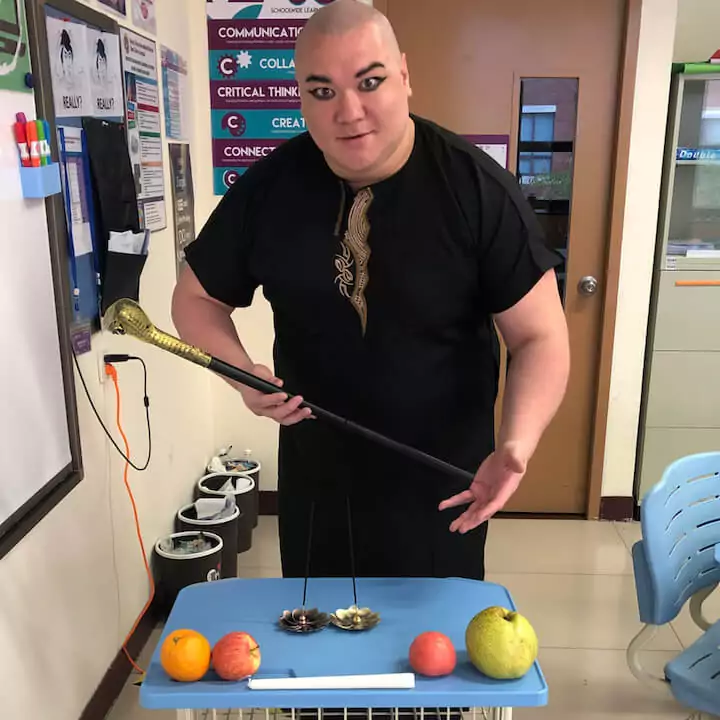Are you looking for new ways to engage your English language students? Do you wish to get them up and moving, boost their motivation, and build their confidence with the language? Meeting all these goals may seem difficult, but teaching with drama as an ESL teaching method offers a fun and student-centered way to achieve them.
If you’re new to teaching, you’ll want to get initial training and qualification with a TEFL certificate. You can explore our online TEFL courses to get started!
What does it mean to use drama when teaching ESL?
You have probably already used a bit of drama in your lessons if you have had students read a dialogue out loud from their textbooks or perform simple role-plays. These activities give students an effective warm-up for more advanced drama tasks.
Role-plays
Students expand their dramatic skills when they convey emotion, add movements, and incorporate gestures while reading dialogues and performing role-plays. Students can take the activity further when they write their own dialogues or memorize lines with the goal of presenting a short skit to the class.
Improvisation
Another way to use drama in the classroom involves improvisation. This spontaneous method works well with intermediate to advanced learners because it gives them a hypothetical situation that they must act out on the spot using their English vocabulary and skills. For example, you can give pairs a situation involving two people, such as a customer receiving terrible service in a restaurant. You assign the roles, and the students act out the scene. You can also adapt improvisation activities for larger groups.
Class plays
Organizing a class play also provides a strong way to use drama with your students. You can begin by reading a short, level-appropriate story or play together. You then assign roles or let students choose them and dedicate class time to learning lines and practicing parts. The work culminates in a class production, and simple costumes and props can enhance the performance.
Make your lessons more fun for adults with these ESL games.
Learn about 8 ESL methodologies and get sample activities with the free guide to
Teaching English Learners: Popular ESL Learning Methodologies
downloadWhat are the benefits of teaching through drama as a technique in ESL?
Take advantage of students’ high energy levels
If you have an energetic group that enjoys your classes but struggles to sit still for vocabulary lessons and grammar drills, you can let them practice small skits that incorporate the target language.
Let your students take the lead
Another benefit of using drama is the opportunity for students to learn in a relaxed environment that invites them to take the lead. Students can assume roles such as screenwriters, directors, actors, storyboard artists, costume designers, and even technical experts if you use classroom technology. The direction they choose helps you tailor lessons to each group.
Break the ice
Practicing small skits and short plays gives you an ideal way to break the ice in a quiet classroom filled with shy students. Students can act out words and sentences, or present their own names as gestures, which provides excellent ESL icebreakers.
How does drama help ESL students learn?
- Teaching language through drama gives students an opportunity to relax their minds while learning and helps them retain knowledge more effectively.
- Memorizing lines activates the brain and connects language with gestures.
- Acting helps students remember words and sentences.
- Using the body on stage helps teachers get a total physical response (TPR) from students, which supports many effective ESL teaching methods.

What is the role of drama in teaching ESL?
A dialogue, skit, or play gives students meaningful context. When students learn, memorize, and practice a drama, they interact with the content on a deeper level and engage all four language skills: reading, speaking, listening, and writing (especially if they create props or take notes on their lines).
Using drama to teach English builds team spirit, strengthens communication skills, and enhances students’ confidence in their English abilities. During drama practice, students make mistakes, experiment with language, and learn to improvise when they forget a word or line.
This flexibility strengthens fluency and vocabulary knowledge, which increases students’ confidence even further. Memorizing and practicing lines also complements many widely used TEFL speaking activities.

How can drama be used in the ESL classroom to support instruction?
Let’s look at several ways that class plays and other drama-based activities can create warm-ups and build skills as part of your ESL lesson plans.
Warm-ups
If your class is working on a play, you can use small sections of scenes or single sentences as warm-ups to review lines. You can also play a game of “telephone” using a line from the play.
Reading skills, vocabulary, and grammar
When students memorize lines for a skit or play, they must read the lines, grasp their meaning, and understand the vocabulary and grammar structures. This process gives students a strong entry point into the target language. You can encourage them to look up unknown words and practice correct pronunciation. You should also give them time to ask questions about the content or grammar.
Increasing retention
Students, especially children, retain language through repetition. While adults may find repeated lines boring, students often become more motivated as they improve their memorization.
During practice sessions, you can vary the activity by letting students try different acting methods and movements. If they still remember their lines, they are likely storing them in their long-term memory.
You can read more about ESL games and activities for kids and teens here.

Practicing fluency
By repeating and practicing lines and experimenting with language, students build their English fluency. You can include exercises such as speed challenges, slow-delivery challenges, or acting tasks that have students express emotions like sadness, excitement, or anger. These activities help students use language flexibly and support fluency.
Writing
If you teach intermediate or advanced learners, you can challenge them to write their own play as a class project. Working collaboratively and using creativity often becomes a rewarding experience.
Does drama as an ESL teaching method sound like something you want to try? No matter the age or level you teach, this approach gives students a creative way to perform, play, and practice their language skills in meaningful situations. When you introduce drama into your lessons, you create a classroom environment that encourages curiosity, lowers pressure, and invites students to experiment with English in real time.
If you want to enrich your lessons and give students a memorable learning experience, teaching with drama offers a practical and adaptable method you can start using right away.
















